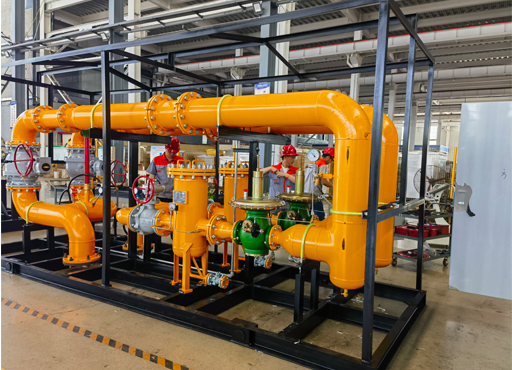
Sep . 23, 2024 11:35
Back to list
Understanding Decompression Skid and Its Applications in Industrial Processes
Understanding Decompression Skids A Critical Component in Industry Safety
In the realm of industrial operations, safety is a paramount concern. One of the critical components that contribute to the safety of operations, particularly in scenarios involving high-pressure environments, is the decompression skid. This specialized equipment plays a vital role in managing the risks associated with the rapid depressurization of gases or liquids, making it indispensable in industries such as oil and gas, chemical manufacturing, and mining.
A decompression skid is designed to safely manage and control the release of pressure in systems that contain volatile substances. By providing a designated space where controlled depressurization can occur, these skids help to mitigate risks associated with sudden pressure changes that could lead to catastrophic failures, leaks, or explosions.
Components and Functionality
Typically, a decompression skid consists of various components designed to enhance safety and efficiency. These include pressure relief valves, flow control valves, instrumentation for monitoring, and sometimes cooling systems. The pressure relief valves are crucial, as they act as the first line of defense by opening to relieve excess pressure and prevent system failures. Flow control valves are used to regulate the speed at which pressure is released, ensuring it occurs in a controlled manner.
Instrumentation is essential for monitoring pressure and ensuring that all systems are functioning correctly. Operators can observe real-time data, quickly responding to any anomalies that may indicate a malfunction within the system. Additionally, some decompression skids are equipped with cooling systems to handle the temperature changes that accompany rapid depressurization, providing further protection to the equipment and personnel nearby.
decompression skid

Safety Protocols
The implementation of decompression skids is governed by strict safety protocols dictated by industry regulations. Operators must ensure that these skids are regularly maintained and tested to confirm their integrity and functionality under various conditions. Training personnel to understand the operation and emergency procedures related to decompression skids is also critical, as human error can significantly increase risks in high-pressure environments.
Regular drills and simulations help prepare employees to handle potential decompression events effectively. Additionally, safety audits ensure compliance with industry standards and mitigate risks associated with equipment failure.
Conclusion
In conclusion, decompression skids are a crucial element in the broader context of industrial safety. They embody the principles of risk management by providing a dedicated system for controlling pressure release, thereby safeguarding both equipment and personnel. The combination of sophisticated design, robust safety features, and strict operational protocols ensures that industries can manage the potentially dangerous effects of rapid depressurization. As technology advances and industries evolve, the role of decompression skids will likely become even more important, continuing to enhance safety practices across various sectors. Ultimately, investing in decompression skid technology is not merely about compliance with regulations; it is about fostering a culture of safety and responsibility in environments where risks are inherent.
Latest news
-
Safety Valve Spring-Loaded Design Overpressure ProtectionNewsJul.25,2025
-
Precision Voltage Regulator AC5 Accuracy Grade PerformanceNewsJul.25,2025
-
Natural Gas Pressure Regulating Skid Industrial Pipeline ApplicationsNewsJul.25,2025
-
Natural Gas Filter Stainless Steel Mesh Element DesignNewsJul.25,2025
-
Gas Pressure Regulator Valve Direct-Acting Spring-Loaded DesignNewsJul.25,2025
-
Decompression Equipment Multi-Stage Heat Exchange System DesignNewsJul.25,2025

